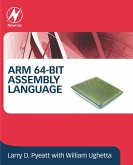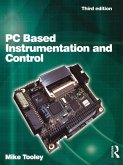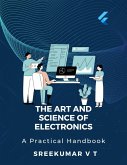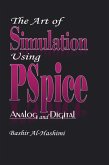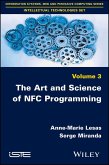The Art of Assembly Language Programming using PIC® Technology thoroughly covers assembly language as used in programming the PIC® Microcontroller (MCU). Using the minimal instruction set, characteristic of most PIC® products, the author elaborates on the nuances of how to execute loops. Fundamental design practices are presented based on Orr's Structured Systems Development using four logical control structures. These control structures are presented in Flowcharting, Warnier-Orr® diagrams, State Diagrams, Pseudocode, and an extended example using SysML®. Basic math instructions of Add and Subtract are presented, along with a cursory presentation of advanced math routines provided as proven Microchip® utility Application Notes.
Appendices are provided for completeness, especially for the advanced reader, including several Instruction Sets, ASCII character sets, Decimal-Binary-Hexadecimal conversion tables, and elaboration of ten 'Best Practices.' Two datasheets (one complete datasheet on the 10F20x series and one partial datasheet on the 16F88x series) are also provided in the Appendices to serve as an important reference, enabling the new embedded programmer to develop familiarity with the format of datasheets and the skills needed to assess the product datasheet for proper selection of a microcontroller family for any specific project.
The Art of Assembly Language Programming Using PIC® Technology is written for an audience with a broad variety of skill levels, ranging from the absolute beginner completely new to embedded control to the embedded C programmer new to assembly language.
With this book, you will be guided through the following areas:
Approaches to locate resources
Appendices are provided for completeness, especially for the advanced reader, including several Instruction Sets, ASCII character sets, Decimal-Binary-Hexadecimal conversion tables, and elaboration of ten 'Best Practices.' Two datasheets (one complete datasheet on the 10F20x series and one partial datasheet on the 16F88x series) are also provided in the Appendices to serve as an important reference, enabling the new embedded programmer to develop familiarity with the format of datasheets and the skills needed to assess the product datasheet for proper selection of a microcontroller family for any specific project.
The Art of Assembly Language Programming Using PIC® Technology is written for an audience with a broad variety of skill levels, ranging from the absolute beginner completely new to embedded control to the embedded C programmer new to assembly language.
With this book, you will be guided through the following areas:
- Symbols and terminology used by programmers and engineers in microcontroller applications
- Programming using assembly language through examples
- Familiarity with design and development practices
- Basics of mathematical knowledge in hexadecimal
- Resources for advanced mathematical functions
Approaches to locate resources
- Teaches how to start writing simple code, e.g., PICmicro® 10FXXX and 12FXXX
- Offers unique and novel approaches on how to add your personal touch using PICmicro® 'bread and butter' enhanced mid-range 16FXXX and 18FXXX processors
- Teaches new coding and math knowledge to help build skillsets
- Shows how to dramatically reduce product cost by achieving 100% control
- Demonstrates how to gain optimization over C programming, reduce code space, tighten up timing loops, reduce the size of microcontrollers required, and lower overall product cost
Dieser Download kann aus rechtlichen Gründen nur mit Rechnungsadresse in A, B, BG, CY, CZ, D, DK, EW, E, FIN, F, GR, HR, H, IRL, I, LT, L, LR, M, NL, PL, P, R, S, SLO, SK ausgeliefert werden.



